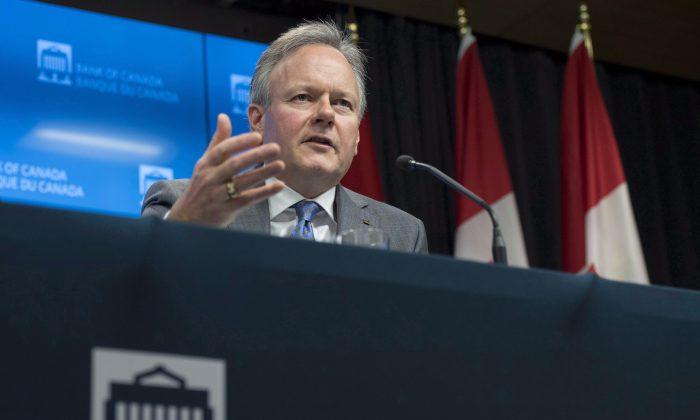“Employment growth has been very strong and wages have shown some improvement,” said the central bank in its press release.
Both employment and exports are volatile readings on a month-by-month basis, but the uptrend in employment is unmistakable. Economists suggest that if that pace of wage growth is maintained, the BoC could be forced to raise rates despite not having greater clarity on the NAFTA renegotiations, a major uncertainty facing the economy.
The labour market hadn’t been keeping up with economic growth, but November’s jobs report may have started to change that narrative. While the headline figure of 80,000 jobs added and 5.9 percent unemployment—without a drop in the labour force participation—catch the eye, wage growth of 2.8 percent may be the biggest takeaway for the BoC.
But despite the improvement, the October reading of the bank’s labour market indicator statistic reflected ongoing slack in the labour market. High long-term unemployment, youth unemployment, and low average hours worked are such manifestations.
In October, the bank said stronger wage growth should contribute to the expected gradual increase in inflation.
BMO has the March rate decision circled for the next hike with a total of two coming in the first half of 2018. National Bank is not ruling out a January hike if the labour market remains firm.
“We continue to think that monetary policy is too loose,” according to a National Bank note.
RBC’s forecast has the bank not moving until April.The average employment growth of 32,500 jobs a month for the last year is the most since 2007, according to RBC. The pace of wage growth is the fastest in a year and a half.
According to a Canadian Federation of Independent Business survey for the fourth quarter, 63 percent of companies see labour shortages as their main concern and 41 percent expect to raise wages in the next year by more than 2.5 percent. Both percentages are at their highest levels in the current economic expansion.
The central bank’s October analysis pointed to inflationary pressures arising from wage growth being muted with one possible explanation being globalization. Companies have been moving production to low-cost regions, thus limiting wage growth. The inflationary pressures from the cost of wages are below what the central bank expects at this stage of the economic expansion.
While the labour market status has brightened, exports have tailed off following a period of rapid appreciation in the currency during the summer. The Dec. 5 reading showed the trade deficit narrowed after a gain in exports, which came after four months of decline.
The central bank expects exports to pick up as foreign demand strengthens. The OECD upgraded its estimate for global growth this year to 3.6 percent.
Canada’s economy remains in a sweet spot—economic growth without inflation. While third-quarter gross domestic product (GDP) moderated to 1.7 percent, it had been running at a 3.6 percent rate over the prior four quarters. The BoC expects growth to cool off after the torrid pace in the year starting from mid-2016.
Reason for Caution
The biggest risk to the bank’s outlook is the outcome of the NAFTA renegotiations. “The global outlook remains subject to considerable uncertainty, notably about geopolitical developments and trade policies,” per the BoC press release.The Bank of Canada is taking a pause on the path to higher rates. After 0.25 percent rate hikes in two straight meetings in July and September, the central bank remains cautious to observe the effects of those rate hikes. “Higher interest rates will likely be required over time,” said the bank in its press release.





